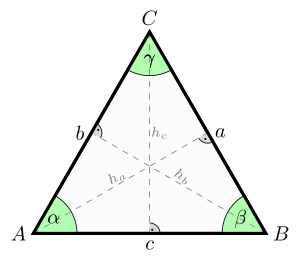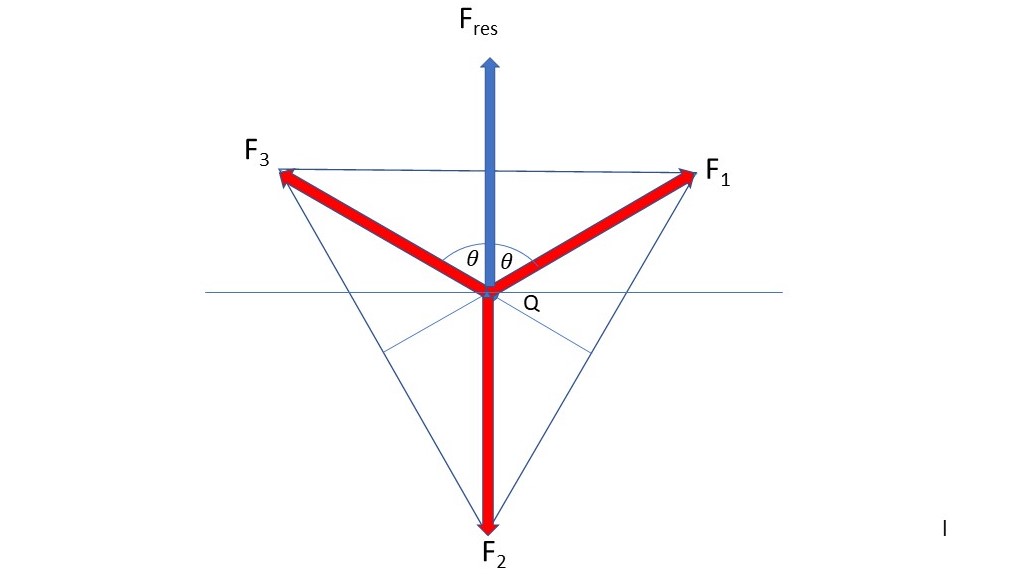Consider three charges, #q_1=q_2=q_3=q#, at the vertices of an equilateral triangle of side #l#. What is the force on a charge #Q# (with the same sign as #q#) placed at the centroid of the triangle? Solve using parallelogram law of vectors.
1 Answer
The force is zero.
Explanation:
Coulomb's Law gives us:
An equilateral triangle looks like this:

Since all the charges are equal and the distance between them is the same the forces look like this:

From the symmetry of the situation you can see that the net force must be zero.
If you wish to show this you can set Q to be at the origin.
You can resolve
Because we have an equilateral triangle then
Since
This is acting upwards. It is exactly balanced by

